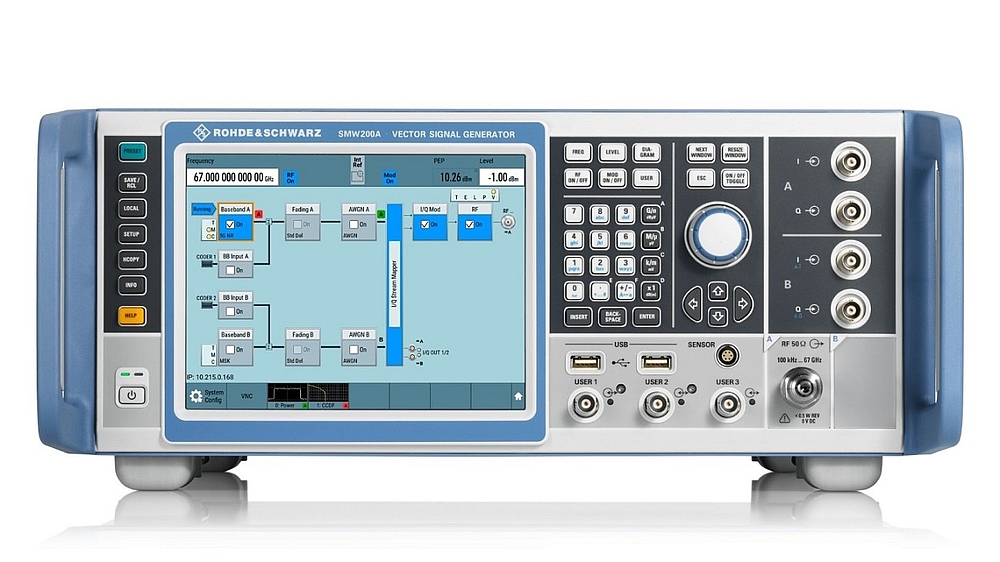- Rohde & Schwarz offers two new frequency options for its R&S SMW200A series vector signal generator.
- The first of these two new frequency options ranges from 100 kHz to 56 GHz. It covers all 5G frequencies currently in use, as well as frequencies specific to earth-satellite communication applications.
- The second frequency option covers a frequency range from 100 kHz to 67 GHz. It supports the higher frequency bands planned for 5G, the 60 GHz WiGig band and inter-satellite links.
For the past decade the ceiling for a standalone vector signal generator capable of creating complex digitally modulated signals with high accuracy has been 44 GHz. Higher frequencies have only been possible with additional external frequency upconverters or lower accuracy, both of which have limitations. Now, with new options for maximum frequencies of 56 GHz and 67 GHz, the R&S SMW200A from Rohde & Schwarz raises the limits for generating wide bandwidth digitally modulated signals of high quality. A maximum modulation bandwidth of 2 GHz is supported, meeting the requirements of even the wider subcarrier spacings defined for 5G FR2 Release 17, and wideband satellite transmissions.
Applications in the U and V bands now supported include mobile radio, Wireless LAN, and satellite communications. For mobile radio engineers developing RF components and products to support the 5G mobile radio spectrum available in the 47 GHz frequency band already allocated by the FCC to US network operators, the R&S SMW200A with 56 GHz or 67 GHz option is the ideal signal generator. 3GPP Release 17 specifying further enhancements to 5G has reached a well-defined stage, so the developers will be looking for a signal generator to cover the now extended FR2 frequency range from 52.6 GHz up to 71 GHz. According to Rohde & Schwarz, the only suitable signal generator currently available is an R&S SMW200A with a 67 GHz frequency option – supporting up to 72 GHz in overrange mode.
The new frequency options are equally interesting for high frequency WiFi and Wireless LAN, including IEEE 802.11ad, which operates in the 60 GHz unlicensed band (57-71 GHz). For satellite communication applications, forward and reverse links operate between 37.5 GHz and 52.4 GHz; inter-satellite links use frequencies up to 66 GHz with bandwidths up to 2 GHz.
The R&S SMW200A with frequency options for 56 GHz or 67 GHz is also suitable for applications above 44 GHz throughout the Aerospace and Defense industry, or for generating digitally modulated signals including early research on 6G components and systems.






